In a previous post, we looked at the menace that sugar and HFCS can pose to our health. At the end of the day, even though we have emerging, “smoking gun” evidence against these caloric sweeteners, my take on it is that we cannot solely put the blame on sweeteners for the obesity crisis in America. Obesity is multi-factorial and we need interventions at multiple levels and a grass-roots movement before we can even begin to tame the monster.
Nevertheless, a few guidelines to reduce our sugar intake, and in particular, added sugars, are in order and I would like to devote this post to these guidelines
Let’s begin by reviewing what are added sugars, what is the current state of affairs with respect to added sugars, and then proceed to the guidelines.
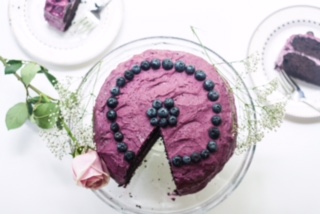
Added sugars include all sugars used in prepared and processed foods. Picture courtesy of http://www.tangandspice.com/. All rights reserved.
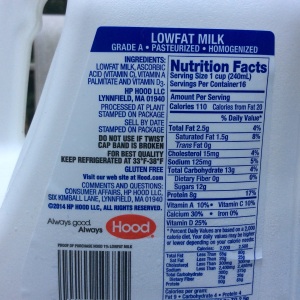
Figure 1: The 12 grams of sugar on this label are naturally occurring sugars and are not counted towards the added sugars allowance. © Copyright 2015 Sangeeta Pradhan, RD, LDN, CDE
What are added sugars?: Added sugars include all sugars used as ingredients in processed and prepared foods (such as breads, cakes, soft drinks, jam, and ice cream), and sugars eaten separately or added to foods at the table.
What are natural sugars?: Naturally occurring sugars are those found in regular, unflavored milk or yogurt, or the natural sugar in fruits and are not included in the “added sugar” allowance.
State of affairs as it stands:
- How much added sugars are you eating every day?: We live in a decidedly sugar sweetened world with the average American consuming a staggering 32 teaspoons of added sugar per person, per day according to the USDA.
- FDA cracking down on food labels: As discussed in last week’s post, in response to the emerging evidence about the link between sugar and heart disease, fatty liver, dyslipidemia and possible inflammation, the FDA has taken a stronger stance against added sugars, by proposing that food manufacturers disclose both added sugars in grams, as well as include the percent daily value (%DV) for added sugars on the Nutrition Facts label of packaged foods. Currently food labels do not disclose added sugars at all as noted in Figure 2 below.
- A reality check with the serving size: Last year, the FDA proposed several changes to the Nutrition Facts label, not the least of which was a more realistic serving size. This was long overdue, given that the serving size for ice-cream is a laughable ½ cup! Not sure about you, but I know a few people (myself included on occasion, I must confess!), who can inhale a ½ cup of ice-cream!!
- What is % DV? : The percent daily value (% DV) stands for the fraction that a nutrient in a serving of food contributes, based upon a daily and generic, 2000 calorie diet. The percent daily value would be based on the recommendation that the daily intake of calories from added sugars not exceed 10 percent of total calories. Currently Americans consume an astonishing 16% of their calories from added sugars according to the FDA. Thus under the new proposal, if you drank a 12 oz can of soda, the label would disclose 40 grams of added sugar, or 80% of the DV.
This move by the FDA is good news for consumers, except for a couple of flies in the ointment.
First off, until the proposed changes take effect, how would you spot hidden and added sugars and navigate the supermarket maze of nutrition labels? Here are a few navigation tools adapted from The Journal of The Academy of Nutrition and Dietetics.
Navigation tools: Your personal GPS at the supermarket:
- The AHA guidelines: The American Heart Association recommends approximately 6 teaspoons of added sugars for women and 9 teaspoons for men based upon a statement published by the AHA in 2006. 1 tsp of sugar = 4 grams which equates to roughly 36-40 grams/day for men and 25 -30 grams for women. Note that you could blow your entire added sugar allowance with the aforementioned can of regular soda (10 teaspoons per 12 oz can).
- Clues for added sugars. Search the ingredient list for words that end with “ose” such as maltose, dextrose, glucose etc, and “syrup” such as maple syrup, agave syrup, as well as terms such as fruit juice concentrate, etc
- Estimate added sugars: Compare the sweetened version with the unsweetened version to estimate added sugars. For e.g., compare plain, unsweetened shredded wheat with frosted shredded wheat or regular milk with chocolate flavored milk. Regular milk has 12 grams of natural sugar, but chocolate flavored milk may have 30 grams of total sugar, suggesting that 18 of these are “added”.
- Just another sweetener: Note that “organic dried cane syrup” may be seemingly healthy, but is just another sweetener .
- Naturally occurring sugars: These include fructose from fruits and lactose from milk, and are acceptable within limits. This is because these naturally occurring sugars come packaged naturally with a host of phyto-nutrients and are hence not the “empty calorie” threats that excess, added sugars may pose.
- Caution with “natural sugars”: Even though the sugar in OJ is “natural”, if you guzzle down 16 oz, which equals 60 grams of rapidly metabolized sugar, this will spike your blood sugar, and release a large amount of insulin from your pancreas, causing a subsequent crash, hunger and weight gain. You are almost always better off with the whole fruit, rather than the juice, as the fiber in fruit will mediate the insulin response.
- A wolf in sheep’s clothing: Many cereals such as Corn flakes and Rice Krispies may seem innocent enough if we go just by the sugar guidelines, offering only a scant and impressive 2-3 tsp of sugar per serving. However, these are nevertheless highly refined and would likely have an adverse effect on your blood sugar because the processing strips it of the all important fiber. Look for whole grain cereals with greater than 6 grams of fiber and less than 5 grams of sugar per serving.
Now that you are armed with these navigation tools, I hope you find yourself cruising the supermarket aisles with more ease and confidence!
Disclaimer: This blog is for informational purposes only and should not be construed as medical advice. Please consult your doctor or registered dietitian for recommendations tailored for your unique needs

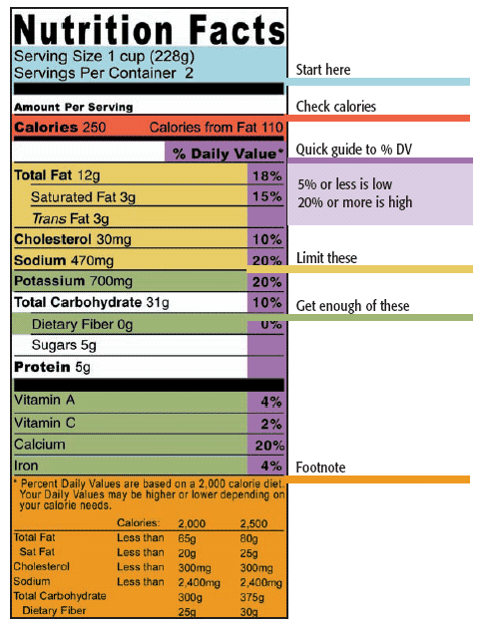
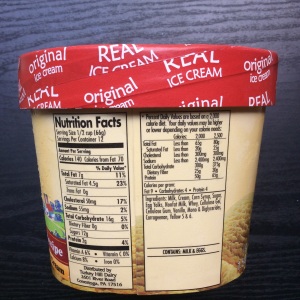
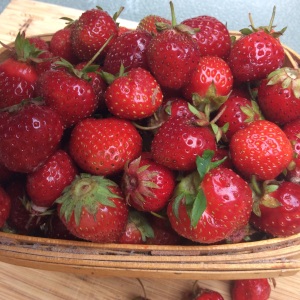













































The amount of added sugars in the foods we eat is really mind-boggling, isn’t it? Oftentimes, it’s the convenience foods we rely on to fuel us throughout the day that have far more than we realize–sweetened yogurts, granola bars, trail mixes. Cereals too as you mention. But these are quick and easy, and we often fall back on them. It’s a tough cycle to break. Thank you for another wonderful post.
LikeLiked by 1 person
Yes, astounding isn’t it, when you really stop and think??! Thank you so much fir your positive feedback, Carrie. Appreciate it😊!
LikeLiked by 1 person
wonderful public service
on making wise,
sweet decisions 🙂
LikeLiked by 2 people
Thank you so much for the tips! Especially about the ways to spot added sugars. These days, one has to be a detective navigating the supermarket AND bring a pair of extra-strong reading glasses 😉 The tactics companies use to mislead consumers are also staggering, and sometimes so ludicrous they becomes amusing… for instance, here in the Netherlands a sugar company promoted white, refined sugar made from beets as ‘all natural’! Because they are made from sugar beets 😉
LikeLiked by 1 person
That was very informative. I never really thought about this .
Well written 🙂
LikeLiked by 1 person
Great information.. and I didn’t realise that about cereals either, so thank you for that info. 🙂
LikeLiked by 1 person
Thank you so much. Appreciate the positive feedback:))
LikeLike
Yes, Wendy, food manufacturers are in the business to boost their bottom line like any other. It is up to the consumer often times to be savvy and not fall for the selling gimmicks. One could spend the whole day at the supermarket and still make questionable choices. With my blog, I am hoping to simplify food choices for consumers in an increasingly complex and baffling , sometimes self-serving industry. Really appreciate the great feedback and look forward to your comments in the future:))
LikeLiked by 1 person
Thank you so much, Hargun. Glad you found it helpful:))
LikeLiked by 1 person
Anytime, Sue. Thank you so much for the positive feedback. It’s nice to know fellow bloggers and others can relate to what I am posting:))
LikeLiked by 1 person
I am enjoying the information you are giving us Sangeeta .. Thank you x
LikeLiked by 1 person
You are more than welcome! So glad:)
LikeLiked by 1 person
I track my calories on MyFitnessPal and can only choose six nutritional categories at a time to show up on my main page. After reading this, I went into the reports page to see what my sugar intake is at. Out of the last 90 days, I have only been below the recommended line 18 times – oops – and on far too many days the graph soars. I’ve started tracking sugar now.
Thanks for the reminder about hidden sugars and the danger of assuming fruit juice is okay.
LikeLiked by 1 person
Hi Christine,
So glad this post helped increase awareness of hidden sugars for you. I really appreciate your sharing your personal experience here. More than likely, others readers have had a similar experience and this will increase their vigilance. By sharing via an online forum, we can all learn and grow. Many thanks for your feedback.😊!
LikeLiked by 1 person
Read not too long ago that commercial bananas have been bred to be so sweet, they are unhealthy for chimpanzees. Thanks for the round up of information on sugars, and the reminder to watch it.
LikeLiked by 1 person
Anytime! Glad you found it helpful and thanks for the feedback as always:))
LikeLike
I try to prepare as much of my food as possible from scratch (including salad dressings) so I am in control of the sugar. But I do love ice cream!!!
LikeLiked by 1 person
I hear you-An occasional indulgence does not hurt at all, and indeed may be necessary to prevent one from feeling deprived!! Thank you so much for sharing.😊
LikeLiked by 1 person
Thanks for sharing. That is so interesting info :)! Bye.Kamila
LikeLiked by 1 person
Any time! Thank you so much for stopping by and for the great feedback!😄
LikeLike
Your blog has fabulous information Sangeeta. I was sure I was following it, and since it’s been a hectic summer, hadn’t noticed I didn’t see your posts in the reader, so I’m now following. 🙂
LikeLiked by 1 person
Hi Debbie,
Thank you so much for your kind words. Likewise, I enjoy reading your blog too. So glad you find my posts helpful😊! Cheers!
LikeLiked by 1 person